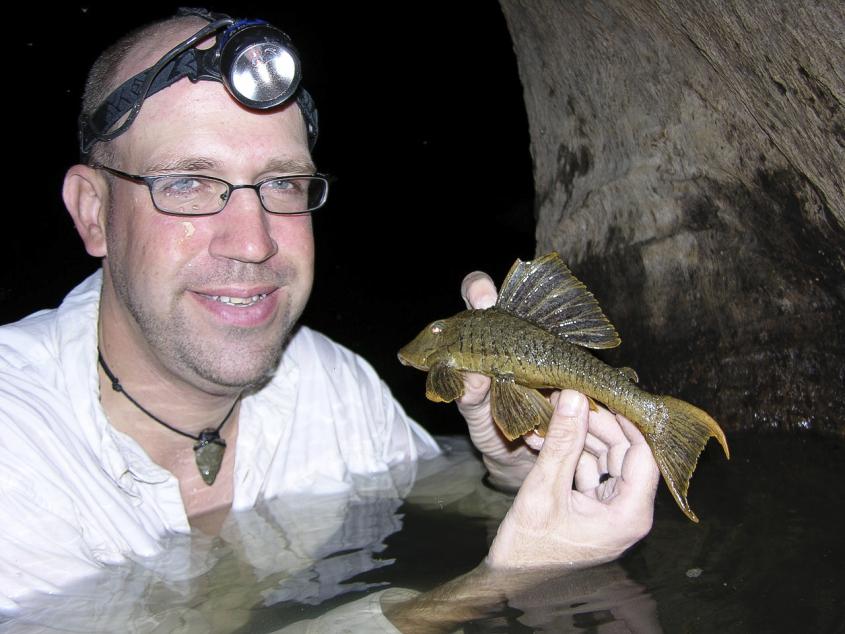A recent article proposing a radical change in the way species are named has drawn the ire of 184 scientists worldwide – two of which are from the University of Toronto.
The article calls for a governing body of non-scientists to make the final call on the assignment of names to species. The authors argue that a lack of governance over taxonomy threatens the effectiveness of global efforts to halt biodiversity loss, is expensive, and damages the credibility of science.
But evolutionary biologists and taxonomists argue that this and other elements of the proposal show a misunderstanding of the fundamental practices of taxonomic work. Nathan Lujan, a postdoctoral fellow in the Department of Biology at U of T Scarborough and former NSF International Research Fellow at the Royal Ontario Museum (ROM), and Tim Dickinson, Associate Professor in U of T’s Ecology and Evolutionary Biology Department and Senior Curator Emeritus in the ROM’s Green Plant Herbarium, are among those voices. They joined co-authors from 37 countries to refute the proposals made by Stephen Garnett and Les Christidis.
Writer, Raquel Russell spoke with Lujan about taxonomy, the controversial proposal and why the classification of organisms is so important for biodiversity research.
You and 183 other environmental biologists and taxonomists have joined in publishing a rebuttal to these proposals. Why should people be aware of this issue?
We’re in the midst of a biodiversity crisis. About 90 per cent of species on earth remain undescribed despite the fact that extinction rates are accelerating. There’s this gap between recognizing species and conserving species and part of the problem is that taxonomists are kind of a dying breed.
We have this criticism of the way taxonomy is conducted that was published recently in the journal Nature, which received a lot of attention and generated a massive response from the taxonomy community. We are defending ourselves through science and hopefully readjusting the priorities to address problems that we perceive as much greater than the administrative pressure that was criticized by Garnett and Christidis.
You argue that placing governance over the science of taxonomy blurs the distinction between taxonomy and nomenclature. What is the difference between taxonomy and nomenclature, and why is it important to make that distinction?
Nomenclature is a legalistic framework that governs how species are named. There are two primary committees – the one that I deal with mostly is the International Committee for Zoological Nomenclature (ICZN), and the International Union of Biological Sciences (IUBS).
Taxonomy is the practice in which scientists systematically classify organisms, so the science of recognizing, describing and defining biodiversity. We do that by proposing and testing hypotheses like other scientists, but our hypotheses – the names that we propose for the units of biodiversity – have to adhere to the rules dictated by nomenclatural committees.
A foundational concept in taxonomy is the ‘type specimen’, which is a unique specimen that carries the name for an entire species, and is the standard against which all other individuals of the same or different species must be compared to confirm an identification. The rules of nomenclature dictate how the name associated with each type specimen is formed and can change over time.

The article calls for a body of non-scientists that will make the final decisions on naming of species. Why is there an interest in having non-scientists do this, and what is the anarchy that they are referring to in the title of their article?
It’s important to point out that the IUBS, which Garnett and Christidis are recommending form a government body for taxonomy, already oversee types of nomenclatural committees. They’re proposing that a separate additional committee composed of non-scientists – anthropologists, sociologists, lawyers, etcetera -- rule on the acceptability of basic hypotheses put forward by taxonomists. In a typical scientific framework of hypothesis testing, there is no external governance. There’s the audience of peers that you put forth a hypothesis to for potential testing and it’s based entirely on internal governance within that specific field.
They’re coming at it from a primarily conservation perspective, which in itself is a scientific discipline, but it is much more embedded within a social framework. They’re seeing the negative aspects of taxonomic instability and academic freedom within the taxonomic field and listing a number of negative or potentially negative outcomes of taxonomic instability. We address each of those negative outcomes and either argue that they really aren’t negative outcomes, that there’s no evidence, that this is just pure hand-waving and speculation by Garnett and Christidis.
What’s an example of a positive outcome of lengthy taxonomic work?
In their proposal, Garnett and Christidis present a number of examples using big game, where recognition of too much biodiversity could lead to negative outcomes of the conservation of large mammals in Africa.
A counter example is a case in the Mediterranean where the European common skate was up until recently considered a single species and was managed as such. But it turns out that there were two separate species being managed as a single fishery. Serious conservation concerns only came to light after these species, which were thought to be one organism, were recognised as two distinct species.
How is taxonomy misunderstood by other disciplines?
Taxonomy is perceived as a service industry and I think it’s important to recognize that we are not just serving other disciplines, but also directly contributing to conservation outcomes. A recent article that appeared in the New York Times lays out the urgent need for taxonomic research in a conservation setting.
How can evolutionary biologists and taxonomists be better supported in the work they do?
The primary institutions in which taxonomic research takes place are natural history museums. Throughout the world, natural history museums are struggling with funding shortfalls and with the retirement and loss of taxonomic experts due just to attrition and retirement. Those positions are often being left empty and so institutional support is critical.
For more on this issue, read Tim Dickinson's talk about the future of taxonomic research.
